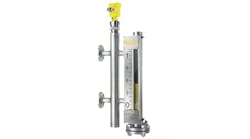Rhonda was jazzed about a career opportunity where she could interact with her co-workers in person. She imagined gaining insight and satisfaction from seeing the solutions she worked on in action, instead of endless hours on Zoom calls or Teams meetings. After a few weeks, she got her first assignment. “See Fred in the control house about the levels in the separation plant.”
Fred was a shift-team supervisor directing a relatively inexperienced crew of chemical plant operators. He was a little offput when the engineering manager sent young Rhonda his way. His experience with young engineers was mostly unsatisfying, as they seemed out of touch with his challenges: keeping the plant running safely and reliably, while conveying his process knowledge to inexperienced operators.
Get your subscription to Control's tri-weekly newsletter.
He might have come off a little gruff when he explained to Rhonda. “I want all my level transmitters to match the sight glasses.”
His level instruments that bring measurements into the house were accompanied by a nearby level gauge, a simple, direct-reading, windowed chamber connected to the side of the distillation tower. When you looked at the liquid in the gauge’s glass, it seemed unlikely the level could differ from what you saw with your eyes.
Rhonda was a recent hire, so she was only beginning to delve into the company’s engineering specifications. These can date back many decades, and one dictate from those days of yore was that level transmitters shall be bracketed by the vessel’s level gauge. This spec came from a time when the displacer was the primary device for controlling level, whose suspended cylinder once produced a usable force-balance to power a pneumatic controller.
Meanwhile, all of Rhonda’s new plant’s levels used electronic differential pressure (DP) transmitters. Their process connections followed the old spec, with the lower connection above the lower tap of the gauge glass, and the upper one below the high tap of the local gauge.
Experienced instrument technicians know DP levels aren’t intuitive. The high side of the transmitter is connected to the lower vessel tap—ensuring the signal increases directly with increasing level. Since the upper tap is likely to fill with condensing liquids from the boiling chemicals in the tower, the low side tubing (impulse line) is filled with liquid. In Rhonda’s plant, the fluid was carefully chosen, so it wouldn’t contaminate the chemicals being purified. As a result, its density didn’t match the stuff in the tower bottoms.
When Rhonda looked at the calibrations of the DP transmitters, they were all strange, -35 inches of water column to -4 inches. It was zero suppression further depressed by the weight of the fill fluid on the low side. But with the taps so configured, how was she supposed to make this instrument match the level seen in the gauge glass?
Back in the office, she had a chat with her boss. Fred gave her some important advice. “The old guys expect you to work with them. Go tell him why you feel perplexed by his request.” Rhonda discovered Fred wasn’t worried about precision, he just wanted his newbies to see a connection between the level in the field and the DCS graphic.
Young engineers may find it easier to work from the basement because one rarely deals with people like Fred. But as engineers, our value to the enterprise isn’t always determined by our knowledge or expertise—sometimes it’s collaboration with co-workers whose goals and motivations are unlike ours. If you allow yourself to dismiss individuals whose education, accents, hobbies, politics or priorities are different, you’ll miss a chance to make an impact, even if it’s only showing your willingness to try. Rhonda didn’t miss her opportunity, and found a place in the operator’s world, whose advice helped her inoculate projects from oversights, and find many suggestions for improvements.




